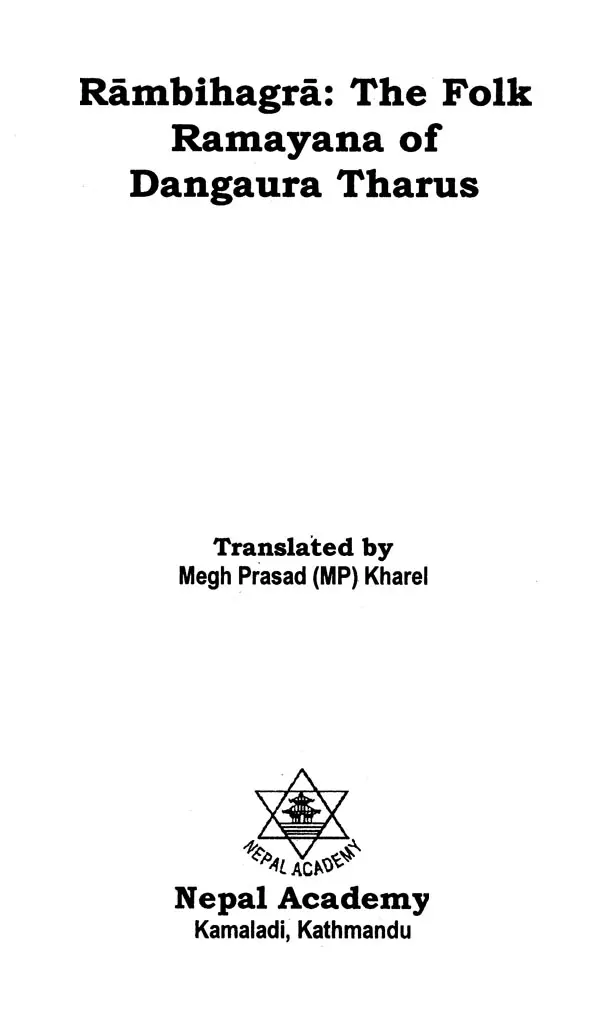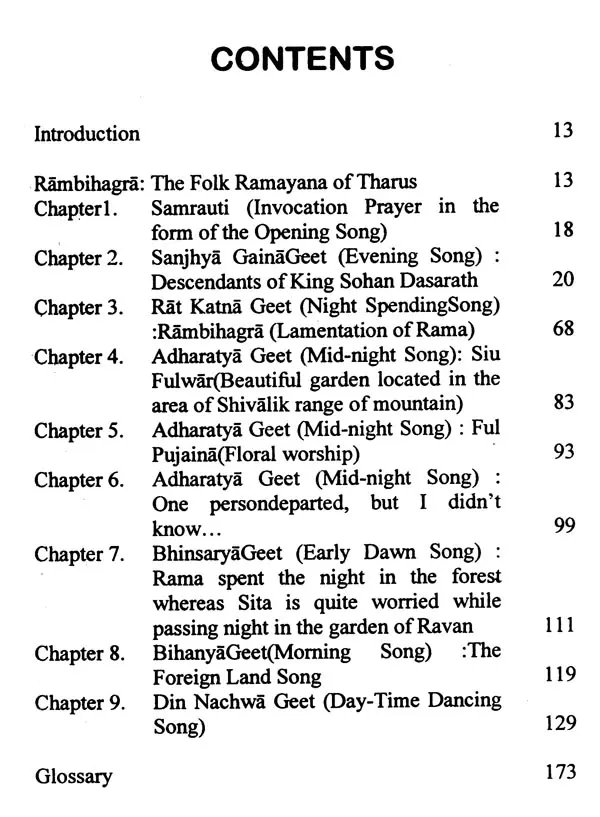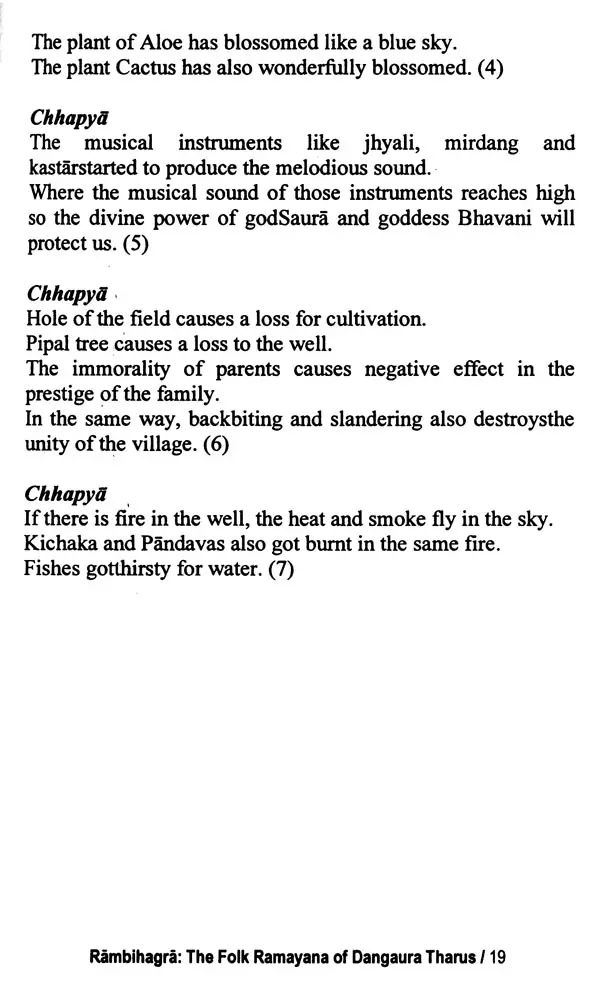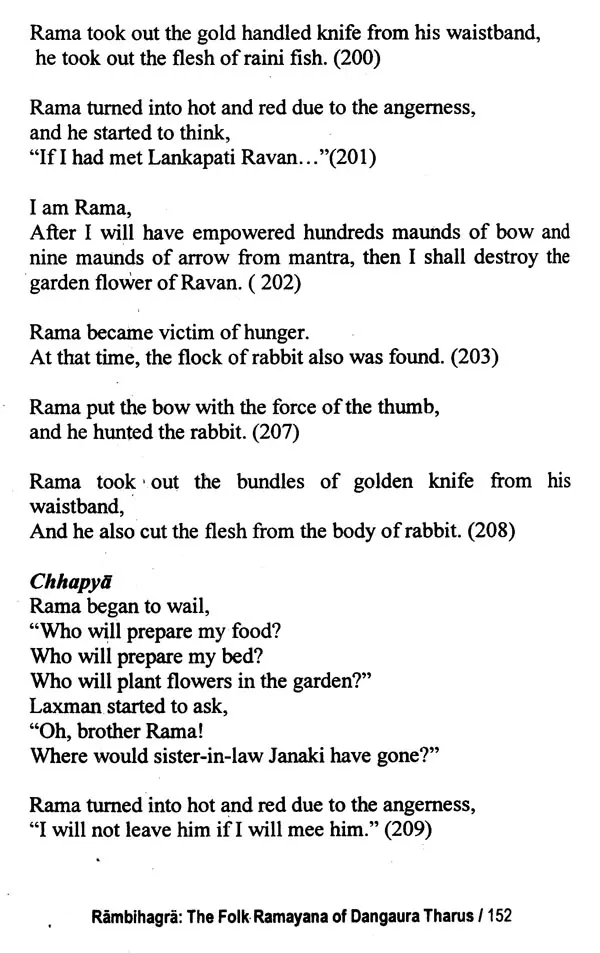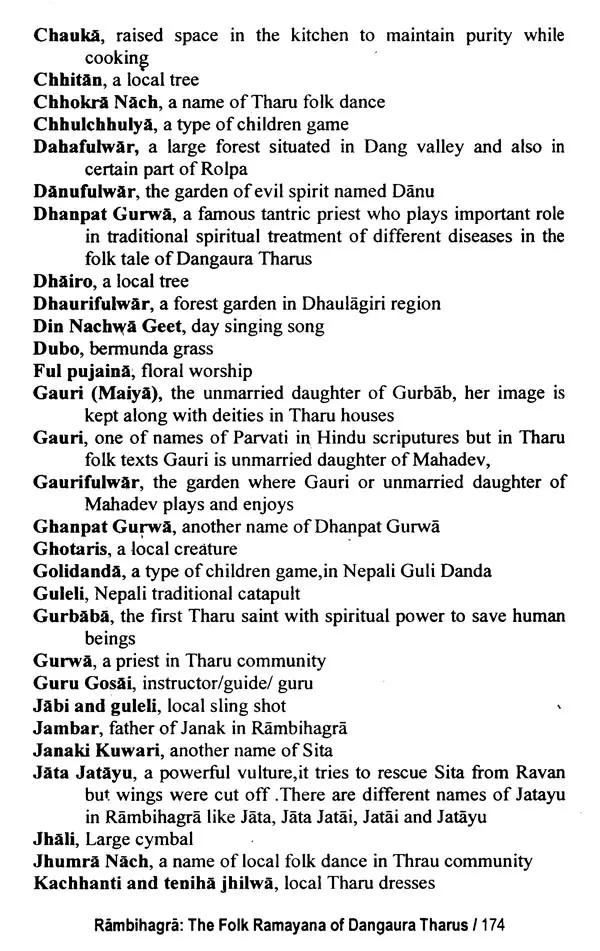
Rambihagra- The Folk Ramayana of Dangaura Tharus
Book Specification
| Item Code: | UAH027 |
| Author: | Megh Prasad Kharel |
| Publisher: | NEPAL Academyn, Kathmandu |
| Language: | English |
| Edition: | 2021 |
| ISBN: | 9789937761000 |
| Pages: | 176 |
| Cover: | PAPERBACK |
| Other Details | 8.50 X 5.50 inch |
| Weight | 180 gm |
Book Description
the Tharu community such as Dangaura, Rana, Kochila, Kathoria and Chitauniya. Each group has its own lingual and cultural specificity. Dangaura Tharus claim that Dang valley is the place of their origin. They are noted for their unique language and cultural practices among Tharus. However, at present, Dangaura Tharus are not confined to Dang; they also.
live in different districts of Tarai in the east and west. They have also migrated to different districts of Uttar Pradesh of India. It is very interesting to note that wherever they have migrated, they have adapted new cultural practices. Despite cultural' assimilation with other communities, Dangaru Tharus still claim that their linguistic and cultural origin is from Dang valley.
Folk Literature of Dangaura Tharus Dangaura Tharus are rich in folk literature as their folk way of life is output of the folk knowledge and indigenous creativity used for many generations. Indeed, this typical folk literature is a cultural heritage of the nation. They have large number of festivals and seasonal songs as well as folk epics and dances. The noted festival songs tharus' long folk song based on the great epic of Ramayana. It is also known as Tharu folk version of Ramayana. The term 'Rambihagra' consists of two words: Rama and bihagra. The term 'bihagra' refers to suffering or lamentation. Its overall story covers the lamentation or suffering of Rama due to the kidnapping of Sita by Ravan. Among various genres of folk literature, Riimbihagra is one of the most significant folk epics in the community of Dangaura Tharus. This epic is popular in their community as they perform it as the folk dances of Chhokra and Jhumrablach, playing their folk specific musical instruments likemandria (tom-tom), basya (flute), manjira (small cymbals), jhali (large cymbal) and kastar during different celebration occasions. So this rural version of Ramayana has the uniqueness with Tharu ethnicity and local culture flavor.
Book's Contents and Sample Pages
